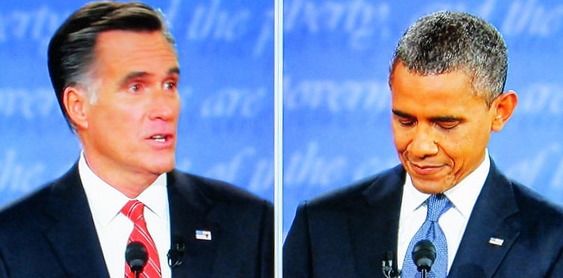By: Steve Sosnick, Chief Strategist at Interactive Brokers
The question that I get asked most frequently is whether we have seen the bottom in equities. It can take various forms. Sometimes, that is the exact wording of the question. Other times I’m asked we have seen capitulation yet, which is pretty much the same question with different verbiage. I’m not complaining about this mind you. It’s my job to ponder and pontificate about questions like this, and I enjoy being part of the conversation.
After last week’s rally, which pushed major US indices about 6-7% higher, it was quite fair to wonder whether we had finally seen the worst of the recent selloff. A move of that magnitude is the sort that we see if we have indeed bottomed out and turned higher. Yet I remain highly skeptical that we have seen the lows for the year or the cycle.
We have noted several times that bear market rallies are short, sharp and ferocious. The linked article was published in early February, which was only about a month after the S&P 500 (SPX) set a new, and for now it’s last, all-time high. It wasn’t a bear market yet, but we correctly interpreted January’s correction as a trend change and suggested that traders add selling rips to their customary playbook of buying dips. Last week proved to be an opportune time to buy the dip, but I don’t believe that we can ditch the rip part yet.
Our calls earlier this year were based upon the idea that the days of central bank accommodation were over and that markets would react as poorly, if not more so, than they did during the fleeting bouts of tightening that we have seen over the past decade or so. Remember, since 2009 we have seen nearly uninterrupted easy money policies from the world’s central banks. Inflation remained in check throughout that period, so it was not a problem for central bankers to reverse course when their attempts to remove some of their accommodation roiled asset markets. Now, inflation is a critical problem, which means that central bankers will not be able to abandon their efforts to quell rising prices quite so quickly.
In short, investors benefited greatly from the adage “Don’t Fight the Fed.” When the Fed was adding money into the system, risk assets benefitted. Until or unless the Fed and other central banks signal a change away from restrictive policies like rate hikes and quantitative tightening, investing in risk assets involves fighting the Fed. If you lived by that age on the way up, you have to respect it on the way down.
That said, markets never move in a straight line, and last week’s jump makes plenty of sense in that context. The prior week’s lows came under duress. On June 16th, we saw a “sell the rumor, sell the news” response to the Fed’s 75 basis point hike a day prior. That came ahead of the quarterly expiration on the 17th, which clearly exacerbated the negative response to the news. Perhaps the most encouraging sign was that the 17th was a fairly boring day. There were big open positions in below market puts in key ETFs and stocks that loomed large but never came into play.
That meant that we ended expiration week with a whimper, not a bang. Coming after a day that had some of the elements of capitulation – down volume exceeded up volume by greater than a 10:1 ratio, and decliners far outpaced advancers – equities were indeed oversold on a short-term basis, and traders who saw that as a buying opportunity were rewarded handsomely.
Seasonal factors can keep the rally in place for another week or two. We are in the midst of a key holiday period, after last Monday’s Juneteenth holiday and next Monday’s July 4th. Thursday is the end of the second quarter, so it would not be at all surprising to see some portfolio window dressing leading up to that date. Friday’s Russell rebalancing proved to be of little consequence to the market as a whole, though it boosted volumes immensely. In short, markets can do what they please during two short weeks in a three week period that includes a quarter end and holiday suppressed volumes.
But the longer-term picture remains in place. Quantitative tightening has only just begun, and even then at a slower pace than ultimately intended. The Fed’s “dot plot” shows an estimate for year-end Fed Funds to be at least 3%, so the rate hikes will almost undoubtedly continue. Bearing in mind that the Fed hiked rates in a bear market – something they hadn’t done since the late ‘70’s/early ‘80s (never an auspicious comparison) – and possibly during a recession, there seem to be simply too many monetary headwinds for the risk assets overall, and equities in particular, to overcome.
Yes, we’ve had a nice short-term bottom, but I highly doubt that we’ve seen THE bottom. Oh, and by the way, in bear markets we can have several short-term bottoms, but only one true bottom. The odds are against us having seen the final lows.
This post first appeared on June 27th, 2022 on the Traders’ Insight blog
PHOTO CREDIT: https://www.shutterstock.com/g/Damsea
Via SHUTTERSTOCK
DISCLOSURE
Investing involves risk, including the possible loss of principal. Diversification does not ensure a profit nor guarantee against a loss.
This material represents an assessment of the market environment at a specific point in time and is not intended to be a forecast of future events, or a guarantee of future results. This information is not intended to be individual or personalized investment or tax advice and should not be used for trading purposes. Please consult a financial advisor or tax professional for more information regarding your investment and/or tax situation. The Standard and Poor’s 500, or simply the S&P 500, is a stock market index tracking the stock performance of 500 large companies listed on exchanges in the United States. Indexes cannot be invested in directly.



